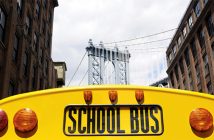
Up to 40% of New York City public school students who qualify for special education services may not be getting them, according to the Education Department in a report issued this week.
Even more concerning is the fact that the records were so inaccurate that the department could not adequately discern the percentage of students who were not receiving proper interventions.
Kate Taylor of The New York Times says the report was in compliance with a City Council law passed last year. The law pointed out there were “major deficiencies” in the fabric of the Special Education Student Information System. The system is in place to track special education students so the Department of Education can reliably report “specific compliance metrics.”
“That for us is one of the biggest takeaways,” said Maggie Moroff, the special-education policy coordinator at Advocates for Children, which helps at-risk students. The lack of reliable data is “hugely important,” she said, “because you need the data to figure out where the holes in the service delivery are.”
Based on the information that was available, the report found that 5% of students who were supposed to be receiving special education resources, or roughly 9,000 young people, were not seeing their needs met at all. More than 35% of students were administered a portion of the assistance that had been recommended for them.
Also, inconsistencies in “course labels in a second data system” could be leading to an inflated number of students receiving less than satisfactory services — or none at all.
State law says that children whose parents or teachers request an initial evaluation must be tested and reviewed within 60 days, but 30% of these students were not observed within that amount of time. Some of these cases may include evaluations that were rescheduled by parents.
A spokesperson for the department, Harry Hartfield, said $7.5 million was put into this academic year’s budget to hire more social workers and psychologists to assist in reducing evaluation process delays.
Letitia James, the city’s public advocate, sued the Education Department citing computer system flaws that have led to students’ losing services and the city’s loss of hundreds of millions in Medicaid reimbursements.
The current special education tracking system was completed during the Bloomberg administration at a cost of $130 million, writes Bryan Dewan for ThinkProgress.
Dewan says that following the recession, school systems across the nation laid off staff and special education professionals who were essential in teaching and nurturing special needs children. In October of 2011, 700 employees were the recipients of pink slips in New York City, and many of these were support staff for special education systems in struggling areas of the city.
The Jewish Political News & Updates’ Menachem Rephun quoted Ms. James:
“These alarming realities are what led my office to file a lawsuit in January against the DOE for failing our kids with disabilities,” she said. “DOE has been neglecting our most vulnerable children for years, ignoring the pleas from parents, students, and teachers.”
Schools Chancellor Carmen Fariña has stated that inclusion is a goal she has prioritized. But reaching a point where special education students can be streamlined into classes with their general education counterparts is still a challenge.
Most of the students – 65% – who receive special services spend 80% of their day with their general education peers. But there are still 35% of the special ed population who spend less than 40% of the day with their cohorts in the traditional education arena.
Fariña has developed new specified program for children on the autism spectrum and has brought 300 new occupational therapists on board. Still, advocates say much more needs to be done.




